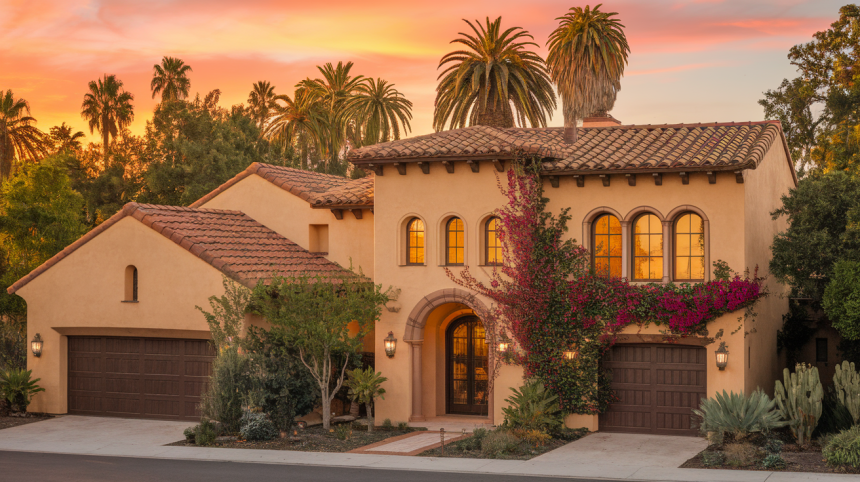Do you dream of a home that stands the test of time?
Mission style homes offer a unique blend of history and function. These homes began in the late 1800s and remain popular today for their simple lines and natural materials. Unlike passing trends, mission homes connect us to a rich past while meeting modern needs.
With warm wood tones, arched doorways, and clay tile roofs, these homes bring comfort and stability. Their thick walls keep homes cool in summer and warm in winter. Plus, their open layouts work well for today’s family life.
Ready to learn how mission style can fit your life? Let’s look at what makes these homes special and why they continue to win hearts after more than a century.
What is a Mission Style House?
Mission style houses have roots in early Spanish church buildings in California. These homes show off plain walls, often white or tan in color. The roofs use red clay tiles and have wide, hanging edges. You’ll notice square pillars and rounded doorways in many mission houses.
These homes pull ideas from Spanish colonial times. When Spanish missionaries built churches in the 1700s and 1800s, they used local materials and simple designs. This look later shaped home styles across the Southwest.
Mission style differs from Spanish Revival in a few ways. Mission homes keep things more basic with less fancy details. Spanish Revival adds more curves, iron work, and bright tiles.
Think of Mission as the plain parent and Spanish Revival as the dressed-up child. The Mission style focuses on plain, useful spaces while Spanish Revival shows off more.
A Brief History of Mission Style Architecture
Mission style homes first gained notice in the 1890s. The style grew from a mix of old and new ideas about building and living. These homes caught on fast in states like California, Arizona, and New Mexico.
- The old Spanish missions in California built from 1769 to 1823 sparked interest
- These buildings showed how to use local items for homes that fit the climate
- They mixed Spanish building know-how with Native American work methods
Arthur Page Brown stands out as an early mover in this style. His design for the California Building at the 1893 World’s Fair helped spread the look across the country. Other builders soon copied his work and added their own touches.
The Arts and Crafts movement of the early 1900s gave the style new life. People liked how Mission homes valued hand-made items and simple living. The style fit well with the push for honest materials and good craftsmanship. This mix of old world charm and modern needs made Mission style a hit with new home buyers.
Defining 5 Features of Mission Style Homes
These homes blend form and function with a nod to their Spanish past. Let’s look at what makes them stand out.
1. Stucco Exteriors and Smooth Plaster Walls
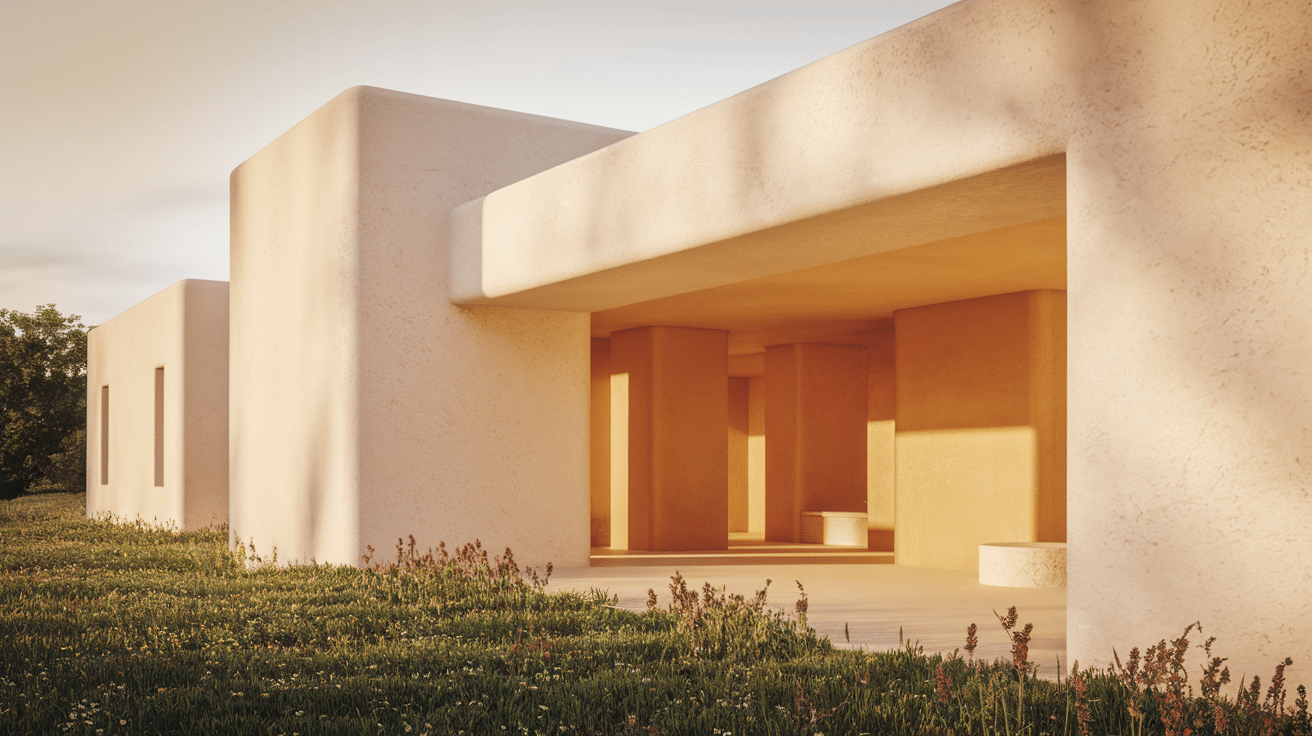
Stucco gives mission homes their clean, solid look. These thick walls work well in hot climates by keeping the cool air in.
- Walls often come in white, tan, or soft earth tones
- The stucco can be smooth or slightly rough to the touch
- Wall thickness ranges from 6 to 24 inches istyle
- Inside walls use smooth plaster for a clean finish
Note: The thick walls offer sound blocking between rooms, a plus for modern family homes.
2. Red-Tile Roofs and Roof Parapets
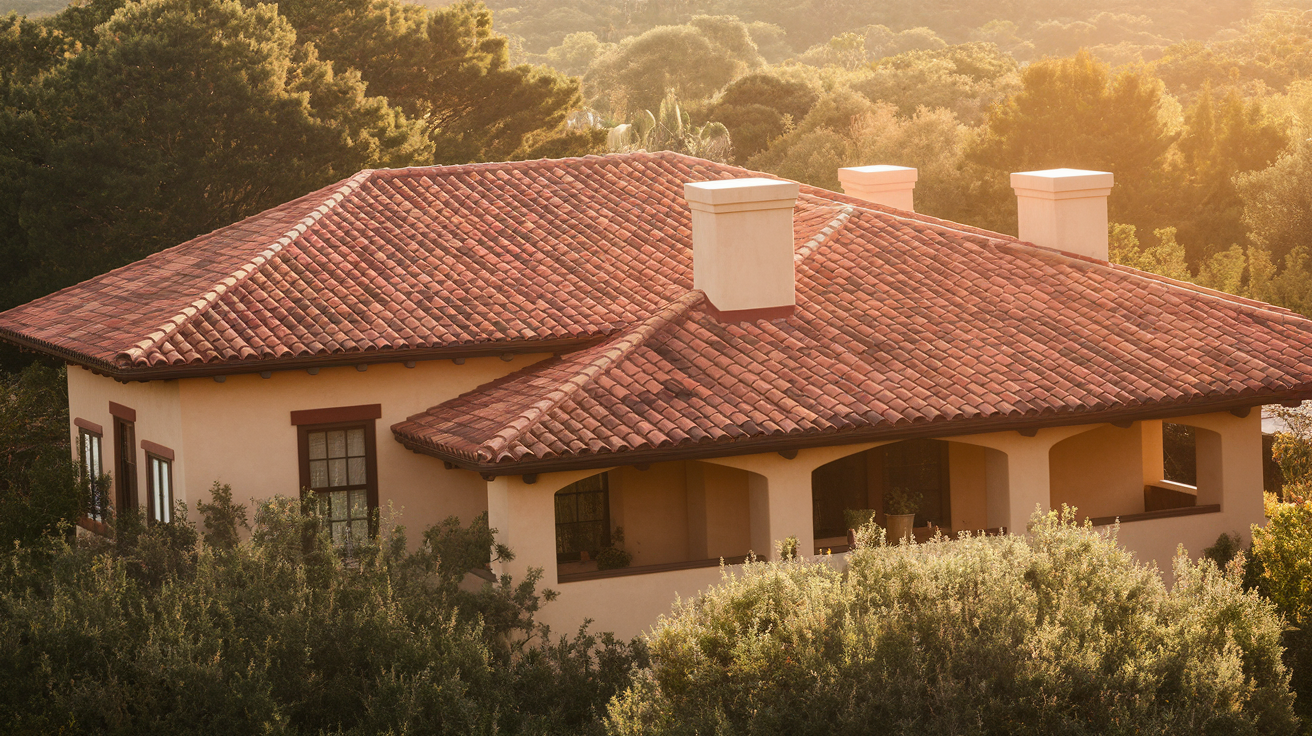
The clay tile roof might be the most known part of mission style. These roofs last for years and help keep homes cool.
- Tiles come in half-round or S-shaped forms
- Colors range from rust red to brown to orange
- Flat roof edges with raised sides create the look of parapets
- Roof edges hang out far to make shade
Note: Modern homes may use lighter fake tiles that look like clay but cost less to put up.
3. Arched Corridors and Doors
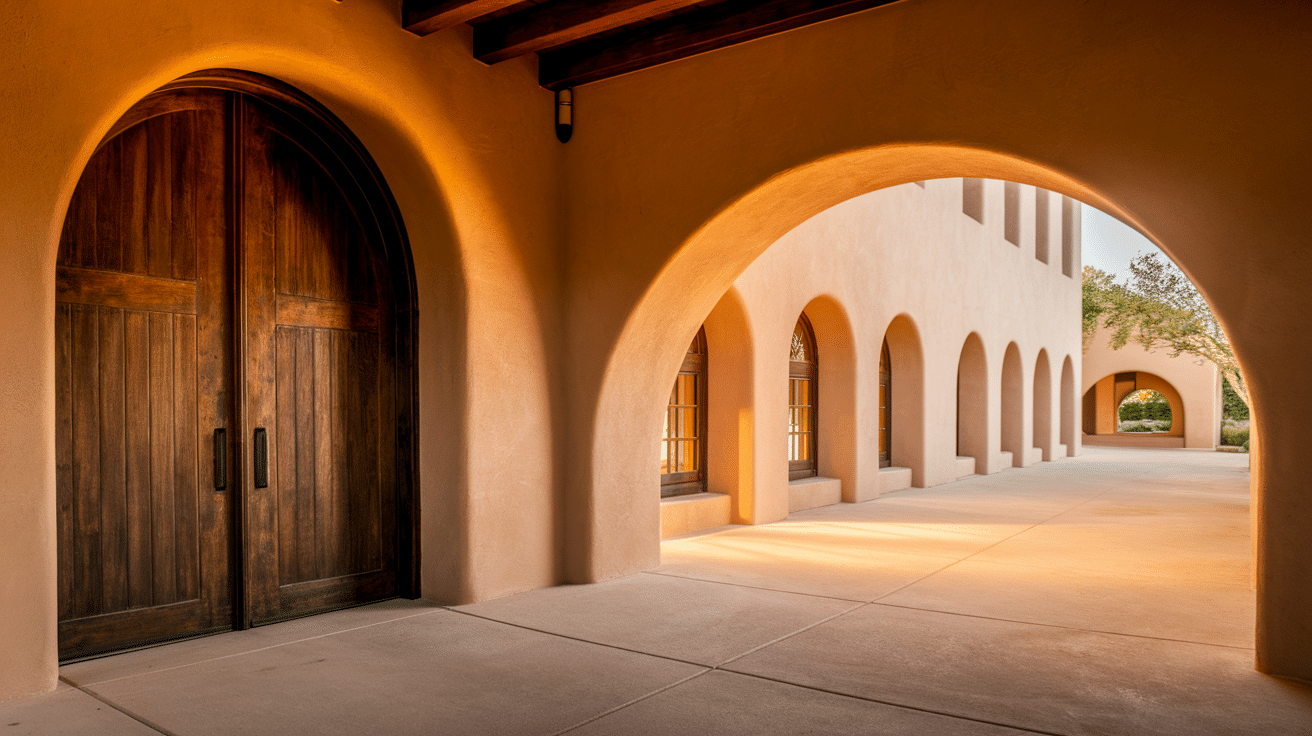
Arches give mission homes their soft, welcoming look. They break up the plain walls with curves.
- Main entry doors often sit in large, rounded arches
- Inside doorways may have arched tops
- Some homes have rows of arches along walkways
- Window frames might also use the arch shape
Note: Real arches need good building skills, so some newer homes fake the look with trim.
4. Exposed Beams and Deep-Set Windows
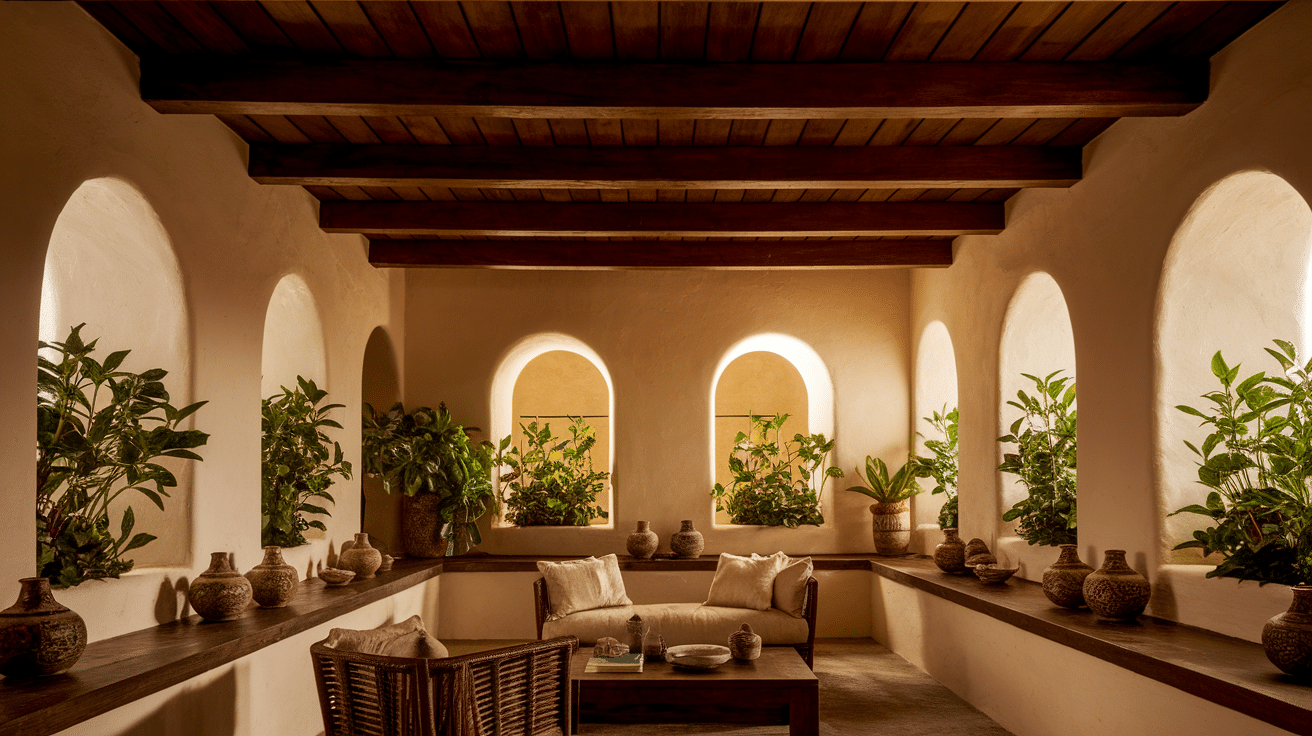
Wooden beams add warmth to mission interiors. They show off the home’s bones in a truthful way.
- Beams often use dark wood like oak or pine
- They may cross the ceiling or frame key spots
- Windows sit deep in the thick walls
- This depth makes shade and adds visual weight
Note: The deep windows create built-in sills, great for plants or display items.
5. Courtyards and Gardens: Indoor-Outdoor Flow
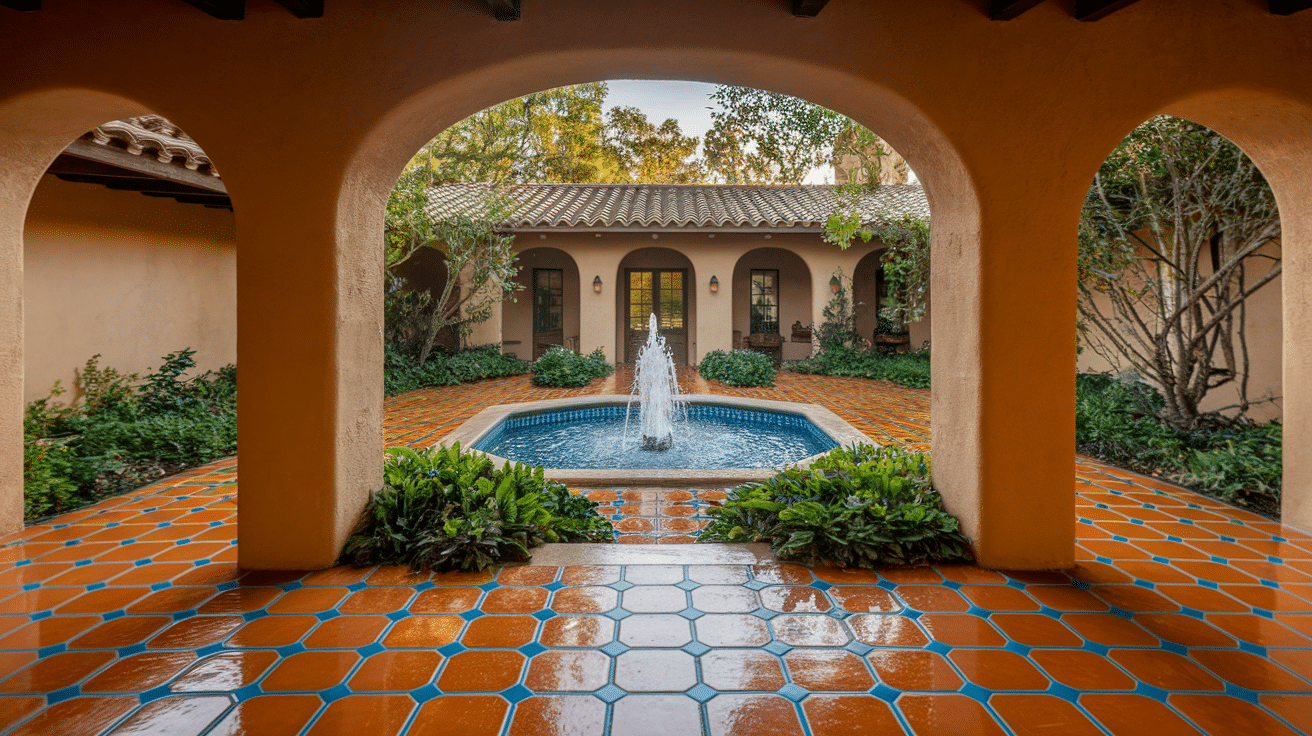
Mission homes blur the line between inside and out. The courtyard makes a room with no roof.
- Courtyards may sit in the center or to one side of the home
- Covered walkways help connect parts of the house
- Plants, water, and shade make these spots nice to use
- Tiles often pave these areas for easy care
Note: Even small mission homes can gain outdoor space with a tiny courtyard.
Why Mission Style Houses Remain Popular Today ?
1. Timeless Design and Curb Appeal: The lasting visual charm that makes mission homes stand out in any neighborhood and hold their value over decades.
2. Natural Materials and Earthy Color Palettes: The use of stone, clay, wood, and other items from nature in their raw or lightly changed forms, paired with colors found in the earth and sky.
3. Emphasis on Craftsmanship and Simplicity: The focus on skilled hand work and basic forms rather than machine-made parts and busy details.
4. Perfect Fit for Warm Climates: The design features that help keep homes cool in hot weather without using much power.
5. Harmony with Landscape: The way mission homes seem to grow from their setting, with low profiles and colors that blend with the local land, creating a sense of belonging rather than standing apart from nature.
Few Tips for Decorating a Mission Style House
- Stick with earth tones for walls and floors, use real wood with visible grain, pick natural stone for counters, add clay tiles in simple patterns, and look for cotton, wool, and linen fabrics.
- Install iron light fixtures with simple shapes, put iron hardware on doors, hang plain iron curtain rods, use wooden ceiling beams, and build or buy wooden bookcases with straight lines.
- Place decorated tiles as kitchen backsplashes, create tile borders in bathrooms, use plain terra cotta tiles for floors, add a small tile mural in an entry, and pick tiles with simple color patterns.
- Look for solid wood tables with thick tops, pick chairs with leather seats, find benches with iron details, use low wide bookcases, and mix in items with Spanish or Mexican carving.
- Keep modern items in wooden cabinets, use plain lampshades on iron bases, add bright pillows to soften dark furniture, limit art to a few good pieces, and mix in plants with large leaves.
Buying or Restoring a Mission Style Home?
When buying, check the stucco for cracks, test roof tiles for damage, and inspect wood beams for rot. Good mission homes have solid walls, tight seals, and level floors.
For care, patch stucco quickly, clean roof tiles yearly, and treat wood with proper sealers. Use matching materials when fixing parts of the house.
Modern updates work when hidden well. Tuck new wiring behind walls, use period-style fixtures, and keep window shapes true to form. The best changes honor the past while fixing present needs.
Conclusion
Mission style homes offer a special mix of history and comfort. They bring us back to a time when buildings matched their place and purpose. With their thick walls, clay roofs, and open layouts, these homes work as well today as they did a century ago.
For those who value solid building and clear design, mission homes hit the mark. They stand firm through time and trends. The natural materials age with grace, and the simple shapes please the eye year after year.
Whether you build new or fix up an old one, a mission style home makes a statement about what matters to you. It shows you care about craft, nature, and the past.
What style could tell a better story of who you are?

